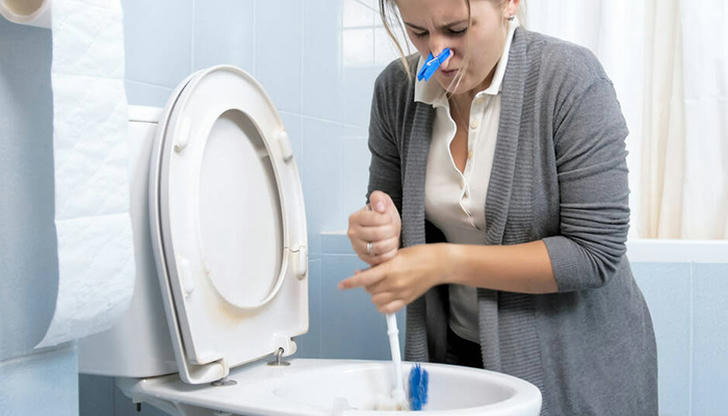Understanding Why Your Toilet Constantly Smells Bad and How to Fix It

No matter how often you clean, does your toilet still emit an unpleasant odor that just won't go away? Despite trying various toilet cleaning agents and keeping the bathroom fan running, the foul smell persists. The truth is, certain cleaning chemicals may actually worsen the odor or create conditions conducive to mold growth. Fortunately, there are 7 reasons explaining why your toilet always smells bad.
Dealing with persistent toilet odors isn't just about ensuring a pleasant environment in your home; it's also crucial for maintaining hygiene and health. Lingering bad odors indicate underlying issues such as bacterial buildup, mold growth, or plumbing problems, which can pose health risks and affect indoor air quality. Additionally, unpleasant bathroom odors can be embarrassing, especially when you have guests over. You need practical solutions to address these issues. By tackling these problems head-on, you can permanently eliminate odors rather than just masking them, so you won't have to grimace every time you step into the bathroom.
Common reasons about your stink toilet:
Inadequate Cleaning Practices

Poor cleaning habits, such as infrequent or improper cleaning techniques, can lead to the buildup of bacteria and other organic matter in the toilet bowl and around the toilet area. Neglecting to clean the toilet thoroughly and regularly allows odors to linger and intensify over time.
Buildup of Bacteria and Mold

Moisture and organic matter provide the perfect breeding ground for bacteria and mold to thrive in and around the toilet bowl, tank, and pipes. If left unchecked, these microorganisms can produce foul-smelling gases, contributing to persistent toilet odors that are difficult to eliminate.
Problems with the Plumbing System

Issues such as leaks, blockages, or faulty seals in the plumbing system can cause sewage gases to escape into the bathroom, resulting in unpleasant odors. Damaged or improperly installed plumbing components can also lead to water accumulation, creating an environment conducive to bacterial growth and foul odors.
Lack of Ventilation

Inadequate ventilation in the bathroom can trap odors and moisture, exacerbating toilet odor problems. Without proper airflow, foul-smelling gases linger in the air, making it challenging to maintain a fresh and odor-free bathroom environment.
Clogged Drains

Blockages in the toilet's drain or sewer line can lead to slow drainage and sewage backup, causing foul odors to emanate from the toilet. Accumulated debris, grease, or foreign objects can obstruct the flow of water and contribute to the buildup of unpleasant odors in the plumbing system.
The Toilet Flange is Too Low

A low toilet flange, which connects the toilet to the waste pipe, can cause improper sealing and lead to leaks or sewage odors escaping into the bathroom. This issue often results from incorrect installation or wear and tear over time, requiring adjustments or replacement to prevent odor problems.
Biofilm in the Pipe Walls

Biofilm, a slimy layer of bacteria and other microorganisms, can develop on the walls of the toilet pipes over time. This biofilm not only traps debris and organic matter but also produces foul-smelling gases that contribute to toilet odor. Due to its hidden nature within the pipes, biofilm can be challenging to detect and remove. However, regular cleaning and the use of specialized pipe-cleaning products can help prevent biofilm buildup and mitigate toilet odor issues.
Health risks associated with bad toilet smells:
Spread of Harmful Bacteria and Pathogens:
Persistent bad smells in the toilet can indicate the presence of harmful bacteria and pathogens, which pose significant health risks to occupants. These microorganisms can cause various illnesses and infections if ingested or inhaled, leading to gastrointestinal issues, respiratory problems, and skin infections.
Impact on Indoor Air Quality:
The foul odor emanating from the toilet can significantly degrade indoor air quality, making the environment unpleasant and potentially harmful to health. Poor air quality can exacerbate respiratory conditions such as asthma and allergies and contribute to discomfort and fatigue among occupants.
Potential Health Issues for Residents:
Exposure to foul toilet smells over an extended period can have detrimental effects on the health and well-being of residents. Chronic exposure to airborne pollutants and bacteria can increase the risk of developing respiratory ailments, skin irritations, and other health problems, particularly for vulnerable individuals such as children, the elderly, and those with pre-existing medical conditions.
Solutions to eliminate toilet odor:
Adopt proper cleaning techniques and use suitable cleaning products to remove bacteria and mold.
Regularly clean the toilet tank and pipes to prevent the accumulation of debris, biofilm, and bacteria.
Ensure plumbing fixtures are properly maintained, including clearing clogged drains and checking the toilet flange height.
Improve ventilation in the bathroom by installing exhaust fans or opening windows to facilitate airflow and reduce odors.
Use natural deodorizers and air fresheners to temporarily mask odors without introducing harmful chemicals.
Consider using enzymatic cleaners or vinegar solutions to break down organic matter and eliminate odor-causing bacteria.
Schedule regular inspections and maintenance of the plumbing system to address any underlying issues contributing to toilet odor.
Encourage proper waste disposal practices to prevent clogs and minimize odors in the toilet and pipes.
